 Signin with Google
Signin with Google Signin with Facebook
Signin with Facebook About Iran
About IranThe Ultimate List of Iran's Top Mountains to Climb

Iran's attractions are not restricted to just historical monuments. Nature and its diverse phenomena put their traces on the country of diversity. Deep canyons, vast plains and ancient forests, cryptic deserts, hidden lakes or high mountains are singular attractions, especially in a four-season country like Iran.
More than half of Iran's area is composed of mountains many of which have an elevation above 3500 meters above sea level. In fact, the Alpide orogenic belt has made two significant mountain ranges on its way crossing west to the east of the Iranian Plateau. These two ranges are Alborz in northern Iran which stretches from the border of Azerbaijan along the entire southern coast of the Caspian Sea to the northeast and Khorasan. Zagros however, covers northwestern Iran and follows Iran's coast on the Persian Gulf ending at the Strait of Hormuz.
The sheer joy of seeing the world from an eagle-eye view is worth climbing the ups and downs of lofty mountains. Mountaineering is a great chance to meditate and practice persistence and patience.
There are dozens of awe-inspiring high mountains to explore in this land. Stay in the know with the list of the most remarkable mountains to climb up in Iran.
1. Damavand, the roof of Iran
Mount Damavand is a striking stratovolcano in Mazandaran Province. With an altitude of 5,609 m (18,402 ft), Damavand is the highest peak of Iran and the highest active volcano in Asia. Damavand's appearance is similar to Mount Fuji in Japan, and its cone-shaped peak is covered in snow all year round.

Damavand has an iconic presence in Persian mythology and legendary stories. Known as the roof of Iran, Mount Damavand is the symbol of determination and aversion to despotism. In the legend of Arash, the archer, the Zoroastrian mythology or the epic stories of Shahnameh, Damavand plays a key role.
2. Alam Kuh, the second high crest over Iran's head
Alamkuh is famous for "the Iran Alps" title among local mountaineers with a height of 4,851 meters (15,915 ft). It is the second-highest mountain in the Alborz Range and Iran crosses Tehran and Mazandaran Provinces. The fame of Alamkuh has got international for the north face granite stone wall which is one of the most technical and challenging routes for rock climbers.
For its persistent dense ice glaciers and gigantic sharp vertical rocks, Alamkuh is regarded as a struggling yet impressive mountain among experienced climbers. The best time to try your hand at climbing this mountain is from June to October.

3. Sabalan, the secret resort of climbers
Along the Alborz Mountains, in northwest Iran, another inactive volcano is located in Ardabil Province. Sabalan or Savalan in the Azari dialect, with a height of 4,811 meters (15,784 ft) is the third-highest mountain in Iran. The permanent, beautiful lake on the peak, several hot springs in the foothills, and fantastic nature attract lots of people to this heaven every year. Locals believe that Sabalan Peak is the place where Zoroaster used to live and then was chosen as the prophet. For this reason, Mount Sabalan is a sacred place.
Most of the year, Sabalan wears white in heavy snow. So, the best time for trekking this natural beauty is between mid-June and mid-September. During this time, you can see another attraction of this region, the nomadic life of Shahsevans. Shahsevan nomads, one of the largest ethnic groups in Iran, settle down at the foothills of Mount Sabalan during summer. Visiting Shahsevans and experiencing their unique lifestyle can be a once-in-a-lifetime memory after conquering Savalan.
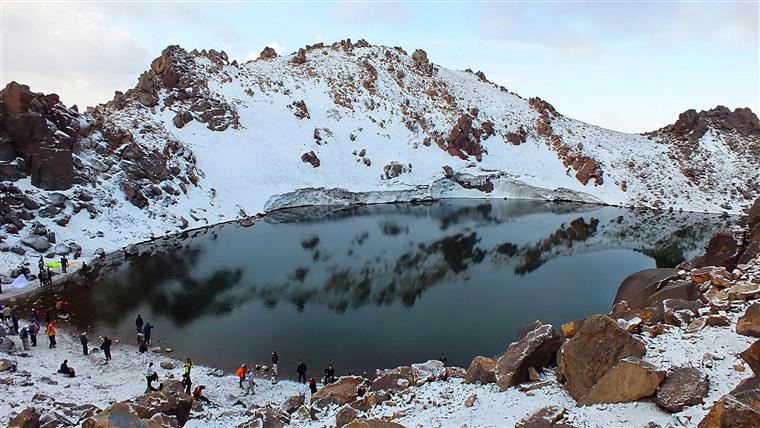
4. Dena, the highest point of the Zagros Range
With an altitude of 4,448 meters (14,593 ft), Dena is the highest mountain of the Zagros mountain ranges. It is located between the three provinces of Chaharmahal and Bakhtiari, Isfahan, Kohkiluyeh and Boyer-Ahmad. Dena is favourable for mountain climbers and from February to April an excellent place for skiing.
Ascending Mount Dena, you will see lots of spectacular ice caves, springs and floating streams. Also the breathtaking sceneries and rare vegetation along the snaky road leading to the summit. If you are lucky, you will see endemic animals like brown bears, eagles, or wild cats. On the foothills of Dena, the welcoming Bakhtiari nomads would invite you to join them for a hot cup of tea.

5. Shirkuh, the 4075-meter terrace over the desert
Shirkooh is the highest peak in Central Iran in the middle of the desert in Yazd Province. Shir means both milk and lion in Persian. This mountain might call so as it seems like a lied lion. Shirkooh is covered in snow during winter. So, it may be the other reason for calling it Shirkooh as it has a milky white look.
Shirkooh is not a challenging mountain to climb. After a few hours of trekking, you have the pristine landscape of the desert in front of you at the top that provides an inimitable experience of climbing a high peak and trekking in the desert as a package within 24 hours.

6. Somamoos, the greenest peak in Iran
In Iran's northern crescent, in Gilan Province, another high ridge of Alborz mountain ranges is located up above the rice paddy fields and tea plains. Trekking Somamoos Mountain is a real experience. To reach its 3,716-meter high peak (12,191 ft), you would see superb landscapes. After passing through the layers of dreamy clouds and fog, you would have the unique view of the Caspian Sea as a worthless price for your effort to climb. Meaning a "holy place", locals regard Somamous as a sacred spot, the home of deities.
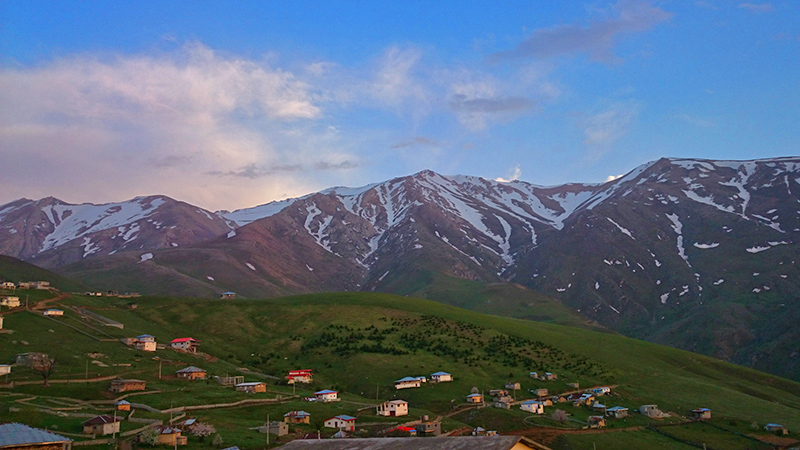
7. Tochal, the handiest peak in Tehran
Tochal is a unique natural attraction in the Iranian capital of Tehran. With a height of 3,964 meters (13,005 ft), Tochal is a very accessible mountain in the north of the city that one can climb up just a few hours after taking the decision. There are different routes from various directions that climbers choose for reaching the summit. Tochal complex at the foot of the peak has several entertainment facilities such as cable cars, trekking routes, a ski resort, etc. Choosing the Tochal complex to ascend the peak, you can walk to the first station and from there, use the cable car or the ski lift to accelerate the total time of climbing. Tochal presents an entirely different view of Tehran and Iran's nature.

8. Sahand, an extinct gate of the west
Near Tabriz, in the very northwest of Iran, the massive Sahand stratovolcano is erected. With an elevation of 3,707 meters (12,162 ft), Sahand is the second-highest mountain in Iranian Azerbaijan after Sabalan. The green pastures, beautiful meadows, and lush valleys are attractions of this unique mountain. Not only climbing lovers and nature buffs but also ski lovers find Sahand a perfect destination. The hot springs with medical usage are another reason attracting so many people to Sahand.

9. Zardkuh, the yellow pinnacle
Along the central Zagros Range, in the Chaharmahal and Bakhtiari Province, Zard-Kuh is located. With an altitude of 4,221 meters (13,848 ft), it is the second-highest mountain in the Zagros Range after Mount Dena. For its yellow dirt, Zardkuh is called so, the yellow mountain. The two most significant trunk rivers in Iran, Karun and Zayanderud originate from the slopes of Zard-Kuh.
This majestic mountain was the location of one of the earliest ethnographic documentary films, Grass, a Nation's Battle for Life. This silent film shows the wonderful but challenging life of a Bakhtiari tribe's migration across the raging rivers and over the highest peak of the Zagros Mountains in the hope of finding green grazing fields.

10. Oshtorankuh, the Lorestan's elevator
Extending in the east of Lorestan Province, Oshtorankuh with eight connected peaks is like a line of camels (oshtoran means camels in Persian). The highest peak is about 4,050 meters (13,287 ft). Oshtoran Kuh is a preserved inhabitance of rare species like brown bears, hyenas, foxes, wild goats, and wolves, along with unique plants like wild pistachio, oak, locoweed and the Iranian queen flora, Flitilaria Tulip.
There are plenty of springs and natural lakes in Oshtorankuh. The largest of them is Gahar Lake. It is an excellent opportunity for camping and fishing in Gahar Lake.

11. Hazar Kuh, thousands of the central wonders
One of the natural attractions of Kerman Province, in the centre of Iran, is Hazar Kuh or Hazaran Kuh. Hazaran Mountain is the highest peak of the Zagros Mountains in the east of Iran.
This 4,510-meter-high mountain (14,796 ft) is the fourth-highest mountain in Iran. Hazar means a thousand in Persian and locals believe that it is called so for the various herbs with medical usages growing in this mountain. The pleasant climate and the magnificent Rhine Waterfall, in the heart of Hazarkuh, welcome so many guests in springs and summers.
12. Taftan, Silent but acclaimed
Mount Taftan is at the end of the Sahand-Taftan stratovolcano belt in the Sistan and Baluchestan province. This semi-active volcano with an elevation of around 4,000 metres (13,123 ft) is the highest mountain in south-eastern Iran. Taftan is a combination of two peaks connected by a narrow saddle section. Trekking this mountain would be an extraordinary life experience. You would see stunning yellow stones change their colours due to the phosphoric hot springs flowing on the slopes. There are also some worth visiting lakes at the heights of Taftan.
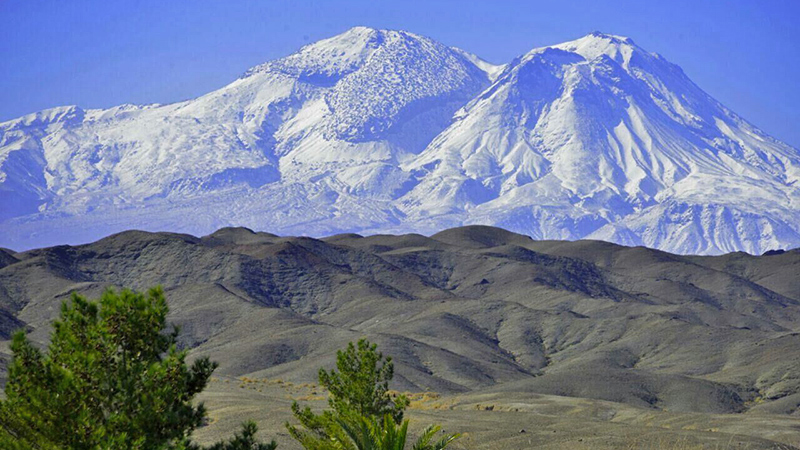
13. Shirbad, over northeast Iran
Situated in Binalud Mountains, near Neyshabur, Shirbad is the highest mount in northeastern Iran. For its 3,227 meter altitude (10,587 ft) it is called the roof of Khorasan. Along with the religious and historical attractions of Khorasan, Shirbad is an interestingly different natural spot in the region. It is one of the best ski resorts in Iran. This resort is open for five months, and if not proficient, you can rent the necessary equipment and enjoy your time trying this exciting sport.
14. Sialan, the silhouette of Alborz Ranges
In the western outlier of the Alborz range, Mount Sialan is erected at an altitude of 4,197 meters (13,769 ft). Located on the borders between Qazvin and Mazandaran Provinces, Sialan has two completely different faces. The northern one facing the Caspian Sea is covered in dense vegetation, but the southern facade is dry. This mountain overlooks the historical Alamut Valley. On your way to the top, there are lots of awe-inspiring springs and fascinating landscapes.
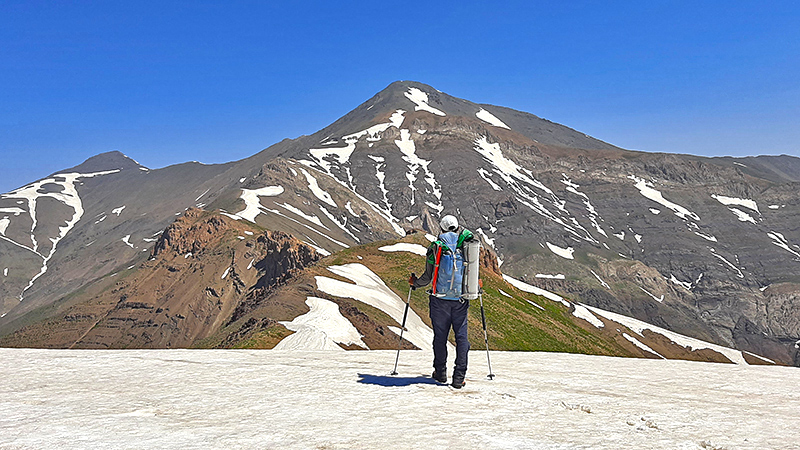
15. Dorfak, Gilan's profile peak
Situated in the north of Iran, Dorfak is a peak in the Alborz Mountains with an elevation of 2,733 metres (8,966 ft). There are different stories about its name, and the most probable one says that Dorfak or Dalfak means "eagle's nest" in the Gilaki dialect.
Except for the extraordinary landscapes and unique vegetation, Dorfak has a cave on its top. Locals use it as a source of water for their cattle in summer. Another natural wonder of Dorfak Mountain is a limestone wall with an approximate height of 500 meters.
16. Poraw, the Kurdish grandeur
Means full of water in Kurdish Language, Poraw is a tourist attraction in the Northeast of Kermanshah Province. Covering an area of 1,020 sq. km, Poraw as a part of the Zagros Range has several peaks. Taq Bostan, Kamar Kabood, and Bistoon Poraw are some high mountains of Poraw. This 3,405-meter high mountain (11,171 ft) hides a rare phenomenon in its heart. Poraw Cave, known as the Everest of World Caves, is an impressive cave in Iran. With 751 meters in depth, Poraw is the world's largest calcareous cave and the deepest cave in Asia. Geologists believe that this cave dates back to the third geological period.
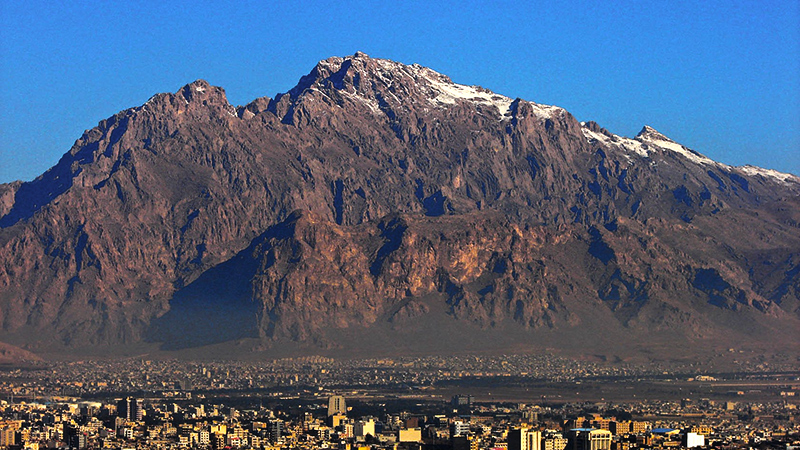
By Samaneh Zohrabi / TasteIran




